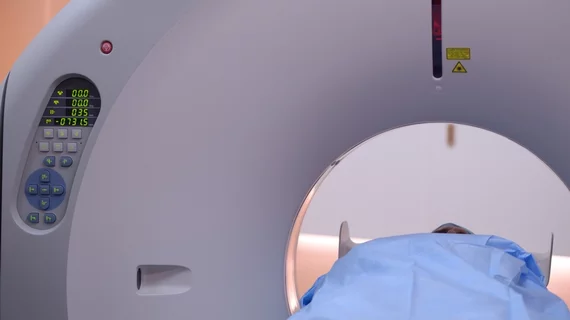When it comes to abdominal imaging, CT continues to reign supreme. Authors of a recent Journal of the American College Radiology article examined a few ways in which radiologists can lower required radiation dose and enhance patient care.
Adjusting kilovoltage peak (kVp) can help decrease patient dose while also improving contrast-to-noise ratio, wrote Michael I. Levinson, with Yale School of Medicine in New Haven, Connecticut, and colleagues. Prior studies have demonstrated this capability during CT angiography (CTA).
Similarly, modifying tube-current time product (denoted in milliampere seconds (mAs)) can also reduce dose, but requires iterative reconstruction to achieve higher quality images. And auto-mAs technologies paired with auto-kVp have been shown to reduce dosage by up to 60 percent.
“Radiologists and technologists are responsible for being patient advocates,” Levinson et al., wrote. “Several easy-to-implement low-kVp CTA examinations are possible in abdominal imaging, resulting in dose reduction while maintaining diagnostic image quality for the desired task.”
Below are the low-kVp CTA applications described by Levinson and colleagues.
Evaluating potential organ donors
CTAs are commonly used in liver and renal donors to evaluate vascular anatomy or unexpected neoplasms prior to organ donation, the authors wrote.
Levinson et al. utilize a low-kVp protocol during renal donor CTAs which can result in size-specific dose reductions as high as 65 percent, without a loss in quality of the arterial phase, they wrote. Their liver donor CTA protocol produces similar dose reductions by using 120 kVp for unenhanced CT of the abdomen, followed by 80 kVp in the arterial and portal venous phases.
Gastrointestinal bleed on CTA
CTAs guide management of patients with upper and lower gastrointestinal (GI) bleeding, but usually require higher doses. Levinson and colleagues use low-kVp imaging and split bolus technique to reduce this dose.
“A noncontrast CT of the abdomen and pelvis is obtained followed by a single postcontrast split bolus phase scan, both acquired using 100 kVp with tube-current modulation,” the authors wrote. “This split bolus CTA provides both arterial and delayed phases in one scan, reducing radiation dose by one-third.”

